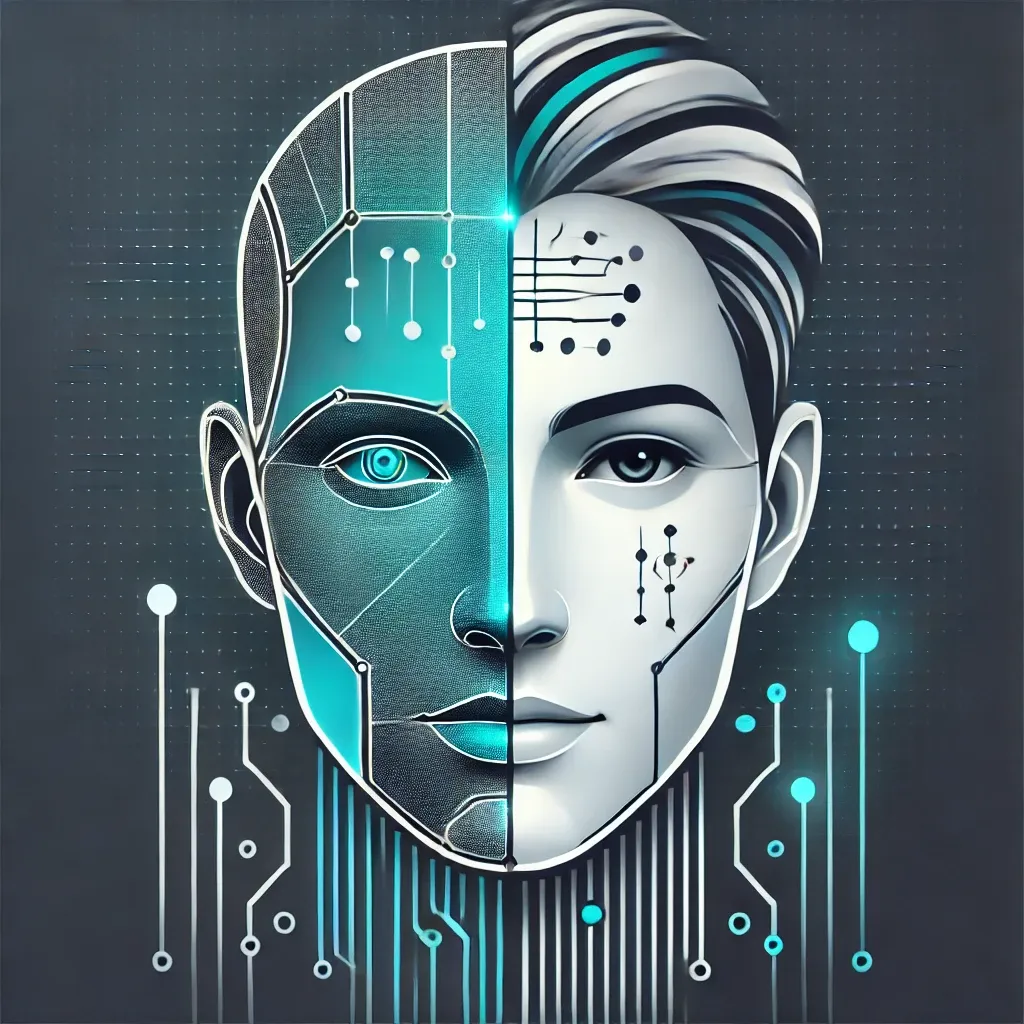The Hidden AI Revolution: How Creative Entrepreneurs Are Building Tomorrow's Economy While Others Fall Behind
While mainstream media fixates on political theatre and market fluctuations, a silent revolution is reshaping our economic landscape. Advanced AI chatbots and conversational systems are creating unprecedented opportunities for those with the vision to harness them, yet this transformation remains largely absent from public discourse. As traditional institutions redirect attention toward geopolitical tensions and inflation concerns, creative entrepreneurs quietly build AI-powered business models that will define tomorrow's economy. This strategic blind spot isn't accidental, but rather reflects a broader pattern of misdirection as society approaches a profound socioeconomic restructuring that few are prepared to acknowledge.

The Great Distraction: How Mainstream Coverage Obscures AI's Economic Impact
Our lifetime's most significant technological revolution is unfolding largely without substantive public examination. While headlines bombard consumers with political controversies and market volatility updates, the fundamental shift in how value is created and distributed through AI receives minimal coverage. This information vacuum isn't coincidental, but rather serves specific interests that benefit from maintaining the status quo until the positioning is complete.
Traditional media outlets devote countless hours to partisan debates and economic symptoms, while neglecting the technological transformation that is causing these very disruptions. When AI does appear in mainstream coverage, it's typically framed through sensationalist narratives about hypothetical dangers or superficial applications, rather than examining how these technologies are already restructuring economic power. This pattern of distraction effectively prevents the public from understanding how AI systems are redistributing opportunities and creating new wealth hierarchies.
The result is a dangerous knowledge gap: while economic anxieties grow, the actual mechanisms driving these changes remain obscured. This information asymmetry benefits those who are already leveraging AI tools, while leaving others vulnerable to displacement without adequate preparation. When mainstream discourse catches up to technological reality, the new economic structure will be firmly established, with power already concentrated among early adopters and creators.
Prompt Engineering: The Invisible Skill Gap Creating Tomorrow's Economic Divide
At the heart of this revolution lies a critical skill few understand: prompt engineering. This specialized ability to communicate effectively with AI systems represents what coding was to the early internet era—a fundamental literacy that will determine economic mobility in the coming decades. Those who master the nuanced art of instructing, guiding, and optimizing AI systems gain access to computational resources that dramatically amplify their productive capacity.
The prompt engineering skill gap remains largely unacknowledged outside specialized circles, creating a stealth advantage for those who recognize its importance. Unlike traditional technical skills with established educational pathways, prompt engineering combines linguistic precision, conceptual modelling, and systemic thinking in ways that conventional education rarely develops. This emerging expertise is a gateway skill that determines who can effectively deploy increasingly powerful AI systems across all sectors.
What makes this skill particularly valuable is its transferability across domains. From marketing to product development, customer service to content creation, the ability to effectively instruct AI systems creates multiplicative advantages. A single skilled prompt engineer can now accomplish what previously required entire teams, fundamentally altering the economics of knowledge work. Yet despite this transformative potential, mainstream educational institutions and workforce development programs continue to focus on traditional skill sets, leaving most workers unprepared for the AI-native economy that is already emerging.

The Theriault Approach: Creative Entrepreneurship in the Age of Conversational AI
While established institutions struggle to adapt, creative entrepreneurs like Claude Edwin Theriault are pioneering new approaches to AI integration, demonstrating the extraordinary potential of these technologies. By merging artistic sensibility with technological fluency, these innovators craft AI systems that transcend automation to create genuine customer connections and value. Their work represents a new paradigm that combines human creativity with computational power to achieve results that were previously impossible.
Theriault's approach centers on developing Android chatbots programmed with sophisticated conversational marketing capabilities that engage potential customers with unprecedented empathy and understanding. Unlike generic corporate AI implementations that often feel mechanical and alienating, these systems incorporate narrative elements and emotional intelligence, creating an authentic connection. By applying creative principles to AI development, Theriault and similar entrepreneurs transform what could be cold technology into extensions of human creativity and relationship-building.
This strategy significantly outperforms traditional marketing approaches by creating personalized engagement at scale. While conventional businesses struggle with diminishing returns from legacy advertising models, these AI-enhanced systems continuously improve through interaction, becoming more effective with each conversation. The result is a fundamental competitive advantage: the ability to automatically establish meaningful connections with prospects, addressing their specific needs and concerns with a nuanced understanding previously possible only through direct human conversation.
What makes this approach particularly powerful is its accessibility. Unlike enterprise-scale AI implementations, which require massive capital investment, conversational systems can be developed and deployed by small teams or individuals with the right skills. This democratization of AI capability creates opportunities for creative entrepreneurs to compete effectively against much larger organizations still bound to outdated customer acquisition models.
The Three-Class Society: Positioning Yourself in AI's New Economic Order
As we approach 2030, the socioeconomic landscape is rapidly reorganizing around AI capabilities, creating three distinct classes that define opportunity and security in the coming decades. Understanding this emerging structure is crucial for navigating the transition and securing a favourable position as these divisions solidify.
At the apex are the Owners—those who control AI systems, infrastructure, and development. This group comprises technical founders who are creating new AI capabilities and strategic entrepreneurs who are building businesses around these technologies. Their defining characteristic is the use of AI and shaping and directing its implementation to generate autonomous value. By owning the means of AI production and deployment, they position themselves to capture disproportionate economic benefits as these systems become increasingly central to all value creation.
The middle tier comprises Adopters—knowledge workers and professionals who effectively integrate AI tools into their workflows to enhance productivity and capabilities. While not controlling the underlying technology, they maintain enough technological fluency to leverage AI systems for competitive advantage. Their value derives from combining human judgment with AI amplification, enabling them to perform at levels that are impossible through either human or machine effort alone. Success in this category requires continuous learning and adaptation as AI capabilities evolve.

The largest and most precarious group will be the Dependents, whose economic activities are determined by AI systems they neither control nor fully understand. As automation accelerates, this category will expand to include many currently stable professional roles, creating unprecedented economic vulnerability. Without ownership or adaptation skills, Dependents have limited agency in an increasingly AI-mediated economy, with their options defined by systems optimized for the benefit of others.
The window for determining your position in this emerging hierarchy is rapidly closing. Those who recognize and act on this transformation now can secure positions as Owners or Adopters, while delay increasingly restricts opportunities to the Dependent category. This reality underscores the urgency of developing relevant skills and strategic positioning before these classes solidify into a rigid socioeconomic structure.
FAQS: Navigating the AI Conversational Revolution
How is conversational AI fundamentally different from previous technological revolutions?
Unlike previous technological shifts that primarily automated physical tasks or streamlined information access, conversational AI represents the first technology capable of replicating and scaling human-like interaction. This qualitative difference creates unprecedented disruption potential, as it targets the core of service economies—human communication and relationship building. While industrial automation transformed manufacturing by replacing physical labour, conversational AI transforms knowledge work by augmenting and potentially replacing cognitive and social functions previously considered uniquely human. This distinction makes its economic impact broader and deeper than prior technological revolutions, affecting virtually all sectors simultaneously rather than sequentially.
What specific engineering skills provide the greatest competitive advantage?
The most valuable prompt engineering skills combine conceptual precision with psychological understanding. Top practitioners excel at breaking down complex objectives into clear instructions that AI systems can effectively process, while also anticipating how these systems interpret and respond to different language patterns. The ability to construct prompts that maintain consistent context across extended interactions proves particularly valuable for conversational applications. Also crucial is the capacity to identify and mitigate inherent AI biases and limitations through careful prompt construction. These skills cannot be developed through theory alone but require extensive practical experimentation with diverse AI systems to build an intuitive understanding of their response patterns and limitations.
Why are creative professionals particularly well-positioned to leverage conversational AI?
Creative professionals possess three critical advantages in the AI economy: conceptual flexibility, emotional intelligence, and narrative thinking. Their training in exploring multiple perspectives allows them to adapt quickly as AI capabilities evolve. At the same time, their understanding of human emotion enables them to design systems that authentically connect with users. Most crucially, their facility with narrative structures enables them to create conversational flows that feel natural and engaging, rather than mechanical. These combined capabilities allow creative professionals to transform AI from mere computational tools into extensions of human creativity and connection, precisely what distinguishes high-value AI implementations from generic automation.
How are forward-thinking entrepreneurs monetizing conversational AI beyond basic chatbots?
The most innovative entrepreneurs have moved beyond simple customer service automation to develop multidimensional AI business models. These include personalized coaching systems that adapt to individual client progress, AI-powered creative collaborators that augment human designers and writers, contextually aware sales systems that identify and address specific customer concerns in real-time, and subscription-based AI personalities that maintain ongoing relationships with users. What distinguishes these high-value applications is their focus on amplifying human capabilities rather than merely replacing them, creating new categories of value impossible through human effort or automation alone. This collaborative approach yields significantly higher monetization potential than basic task automation.
What immediate steps can professionals take to avoid relegating themselves to the "Dependent" class?
To secure positioning in the Owner or Adopter categories, professionals should immediately focus on three parallel pathways: skill development, asset creation, and strategic positioning. Skill development means mastering prompt engineering fundamentals through hands-on experimentation with various AI systems. Asset creation involves building proprietary datasets, custom-trained models, or specialized implementation frameworks that provide unique competitive advantages. Strategic positioning requires identifying which aspects of your profession are most vulnerable to AI disruption and which are most enhanced by it, then deliberately shifting your professional focus toward the latter. Most critically, this transition requires allocating dedicated time for AI experimentation separate from daily work requirements, as integration skills cannot be developed without direct, sustained engagement with these rapidly evolving systems.


